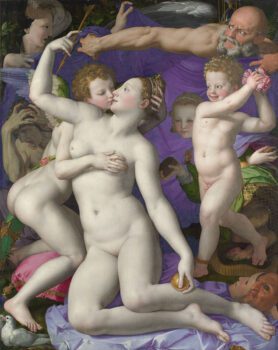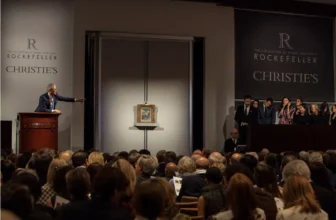The Eternal Dance of Love: Venus and Cupid in Art
Among the endless galleries of art in history, few subjects have enchanted the world as much as Venus and Cupid. Their image, sometimes tender, sometimes mischievous, appears across centuries of painting, whispering stories of love, beauty, desire, and human vulnerability. But what exactly does this pairing mean? Why did Venus and Cupid become beloved muses for Rococo artists? What symbols lie hidden within their paintings, and where are some of the most famous renditions today?
Let us journey into the glowing world of myth, art, and symbolism, where the goddess of love and her playful son still cast their timeless spell.
The Mythological Roots: Who Are Venus and Cupid?
To understand why Venus and Cupid so often dance across the canvases of old masters, we must begin with their origins in mythology.
Venus, the Roman goddess of love, beauty, fertility, and victory, finds her Greek counterpart in Aphrodite. Legends tell that she was born from the sea foam, emerging fully formed and breathtaking. She embodies not just physical beauty but the intoxicating, irresistible force of attraction that binds people together.
Cupid, known as Eros in Greek mythology, is Venus’s son. He is often depicted as a winged infant or a mischievous youth armed with a bow and arrows. Anyone struck by Cupid’s arrow would fall helplessly in love. Thus, Cupid represents the sudden, uncontrollable, and often irrational nature of desire.
Together, Venus and Cupid personify the dual aspects of love: its beauty and its impulsive, unpredictable power.
What is the Meaning of the Venus and Cupid Painting?
When artists depict Venus and Cupid together, they are usually exploring complex themes related to love and desire. The paintings often suggest a maternal relationship between Venus and Cupid but layered with symbolism about the nature of passion itself.
Love’s Innocence and Mischief: Cupid’s childlike form suggests innocence, but his arrows cause powerful, sometimes chaotic emotions. Venus’s presence tempers Cupid’s wildness, suggesting the need to guide desire with wisdom.
Beauty as the Source of Love: Venus represents ideal beauty, the origin point from which love springs. When Cupid is shown attending to Venus, perhaps stealing a kiss, holding a mirror for her, or tangling with her jewelry, it symbolizes love’s inextricable link to beauty and the vanity or pride that can come with it.
Eroticism and Tension: Some depictions emphasize the sensual aspect of Venus, portraying her reclining nude or semi-nude while Cupid flutters nearby. These paintings celebrate human sensuality but also hint at its dangers, love is potent, sometimes overwhelming.
Thus, paintings of Venus and Cupid are rich allegories for the eternal complexity of human love: tender yet powerful, joyful yet fraught with potential peril.
Why Do Venus and Cupid Often Appear in Rococo Paintings?
The Rococo period (roughly the early 18th century) is known for its lightness, elegance, playful sensuality, and ornate detail. It emerged in France during the reign of Louis XV and quickly spread across Europe. Rococo artists, like François Boucher, Jean-Honoré Fragonard, and Giovanni Battista Tiepolo, adored mythological subjects, especially ones that allowed them to indulge in beauty, fantasy, and eroticism without the stern moralism that often weighed down earlier Baroque art.
Venus and Cupid perfectly matched the Rococo spirit:
Playfulness: Rococo celebrated leisure, romance, and flirtation, and few figures better embodied this than a mischievous Cupid and his radiant mother.
Sensuality: The Rococo love of soft, voluptuous forms found ideal subjects in Venus’s body and Cupid’s cherubic form. Artists delighted in painting Venus’s luminous skin and Cupid’s plump cheeks with luxurious attention to texture.
Fantasy: Mythological scenes allowed artists to explore fantastical, dreamlike settings filled with lush gardens, flowing fabrics, and glittering surfaces, without being constrained by realism.
In short, Venus and Cupid gave Rococo painters the perfect excuse to revel in pleasure, beauty, and the fantasy of love.
What Does the Venus Painting Symbolize?
When artists focus solely on Venus, the symbolism can shift depending on how she is portrayed.
Ideal Beauty: Venus is often the ultimate symbol of physical and spiritual beauty. She embodies the harmonious proportions, delicate features, and radiant grace that Renaissance and later artists sought to capture.
Fertility and Creation: As a goddess tied to fertility, Venus sometimes symbolizes not just love between individuals but the creative force itself, the passion that sparks life and art.
Vanity and Pride: Particularly when Venus is shown gazing into a mirror (a motif known as “Venus with a Mirror”), she can represent vanity. In this context, artists explore the double-edged sword of beauty: its power to inspire but also to breed arrogance or shallowness.
Eroticism and Innocence: Depending on the cultural mood of the time, Venus could be portrayed as an emblem of pure love or as a figure of unapologetic sensuality.
Thus, the image of Venus is rarely static. She evolves with the society that paints her, always reflecting its ideals and anxieties about love, beauty, and human passion.
What is the Symbolism of Cupid?
Cupid may seem light-hearted, but his symbolism runs deep.
Love’s Power: Cupid reminds viewers that love is not something we choose rationally. It strikes without warning, altering destinies.
Innocence and Mischief: His childlike form suggests that love, like a child, can be both charming and dangerously unpredictable.
Blindness of Love: In some depictions, Cupid is shown blindfolded. This represents how love often blinds people to faults and realities, leading to both joy and suffering.
The Union of Opposites: In myth, Cupid often brings together unlikely lovers, symbolizing how love reconciles differences and creates unity from disparity.
Mortality and the Divine: As the child of Venus (divine beauty) and Mars (the god of war), Cupid embodies the intersection of creation and destruction, a reminder that love, while heavenly, is also a profoundly human, sometimes painful experience.
Where Is the Venus and Cupid Painting Located Today?
Because Venus and Cupid were so beloved by artists across centuries, there isn’t just one Venus and Cupid painting, there are dozens of famous examples scattered in major museums worldwide. Here are a few of the most celebrated:
“Venus and Cupid” by Lorenzo Lotto , Located in the National Gallery, London. This Renaissance painting portrays a more mischievous Cupid urinating through a laurel wreath, symbolizing fertility and unrestrained desire.
“Venus with Cupid and a Satyr” by Antonio da Correggio , Located in the Musée du Louvre, Paris. This sensual composition shows Venus napping as Cupid and a satyr approach her, hinting at innocence corrupted by desire.
“Venus Consoling Love” by François Boucher , Housed at the National Gallery of Art, Washington, D.C. One of the quintessential Rococo depictions, it shows Venus tenderly calming Cupid, in a pastel world of clouds and draped fabrics.
“Venus and Cupid” (also known as “The Venus of Urbino” for its influence) by Titian , Though not exactly a Venus-and-Cupid proper painting, Titian’s sensual “Venus of Urbino” in the Uffizi Gallery, Florence, strongly influenced countless Venus and Cupid interpretations.
“Venus and Cupid” by Bronzino , Located in the National Gallery, London. This disturbing, complex Mannerist painting features Venus and Cupid locked in an erotic embrace while figures symbolizing fraud, pleasure, time, and jealousy swirl around them.
Each painting reveals a different facet of Venus and Cupid’s myth, sometimes playful, sometimes unsettling, always mesmerizing.
Venus and Cupid: An Eternal Theme
In the end, Venus and Cupid persist because they speak to something universal.
Every generation rediscovers the twin forces of beauty and desire. Every era grapples with love’s joy and its chaos. Artists from the Renaissance to the Rococo (and even today) find in Venus and Cupid an endless source of inspiration, a canvas on which to paint their hopes, fears, and dreams about the human heart.
Venus reminds us that beauty, whether found in a face, a song, or a summer sky, has power. Cupid reminds us that love, for all its sweetness, is a force that can upend the world.
Together, they continue to enchant, challenging us to marvel at the strange, wonderful spell of being human. image/nationalgallery




